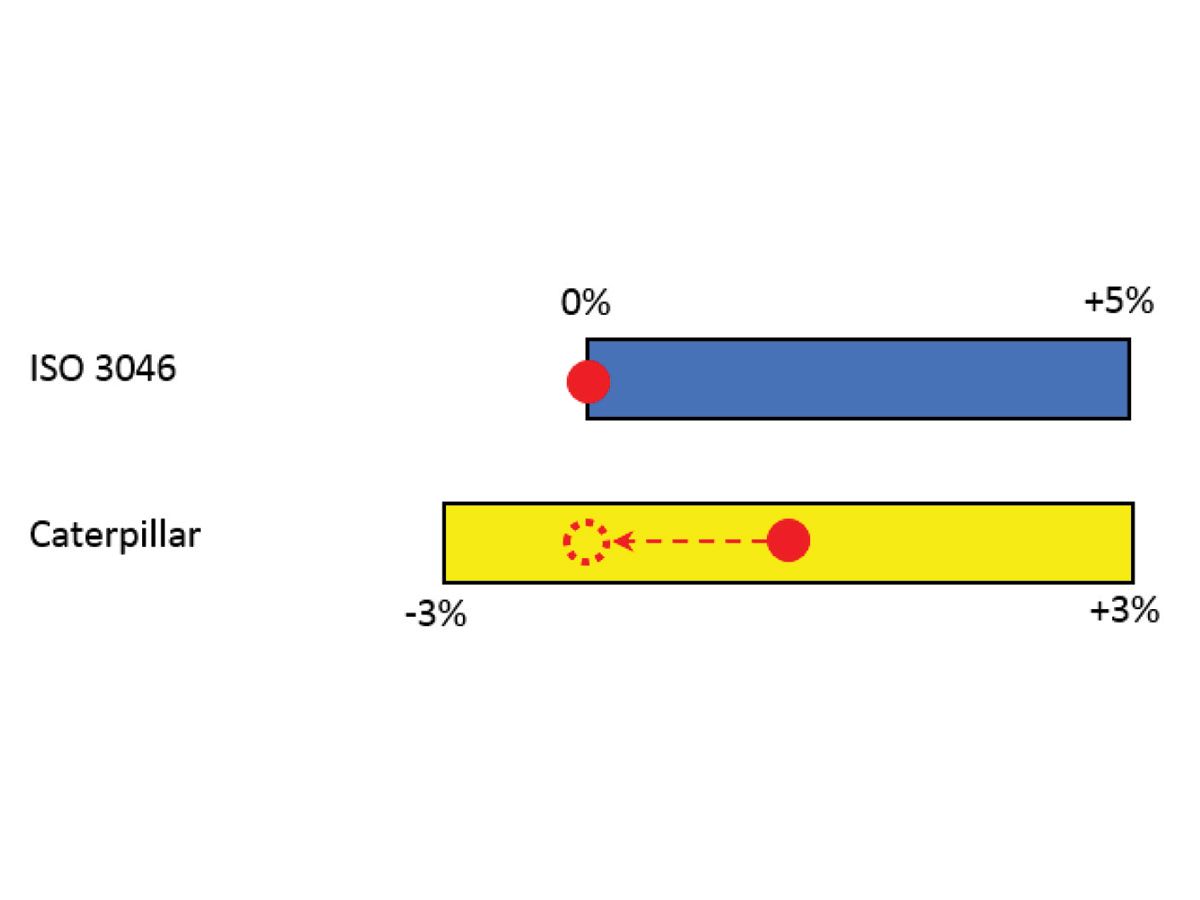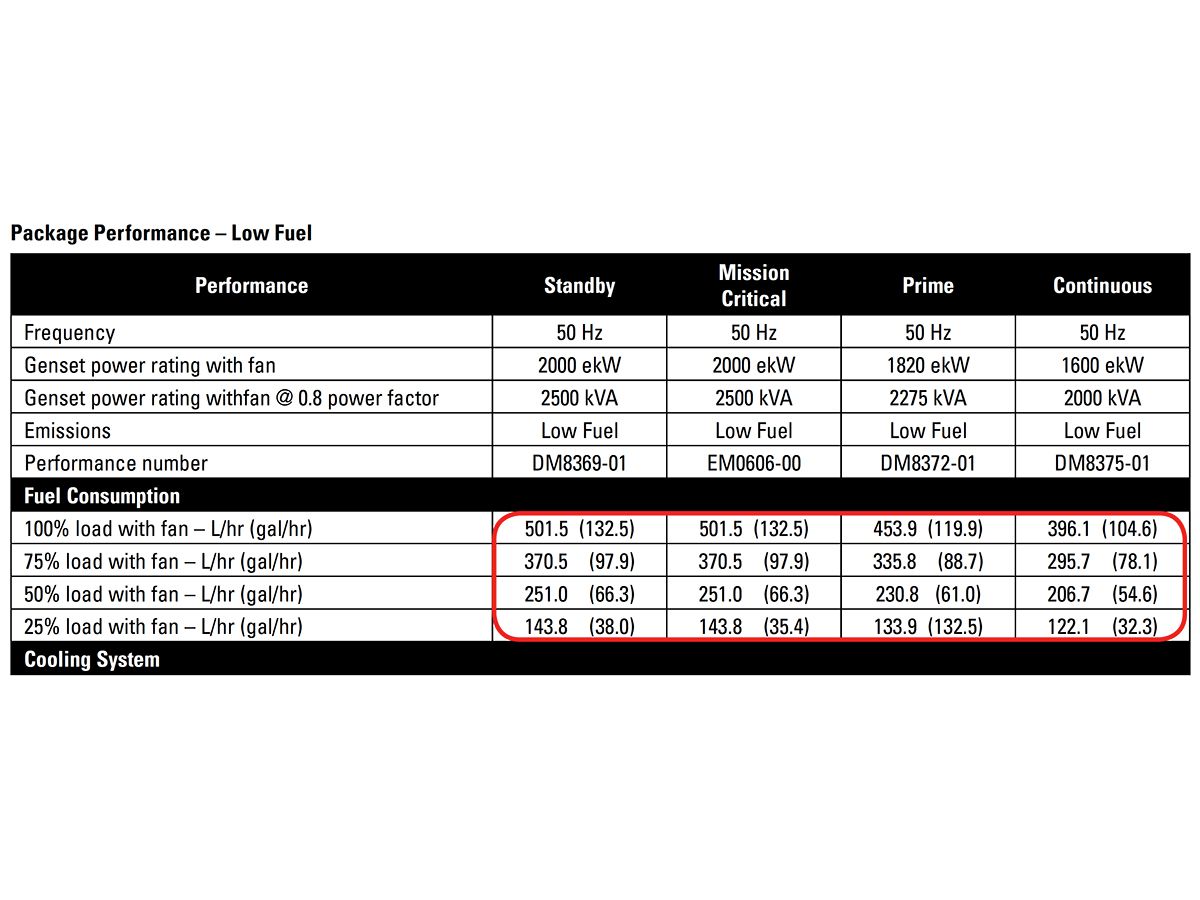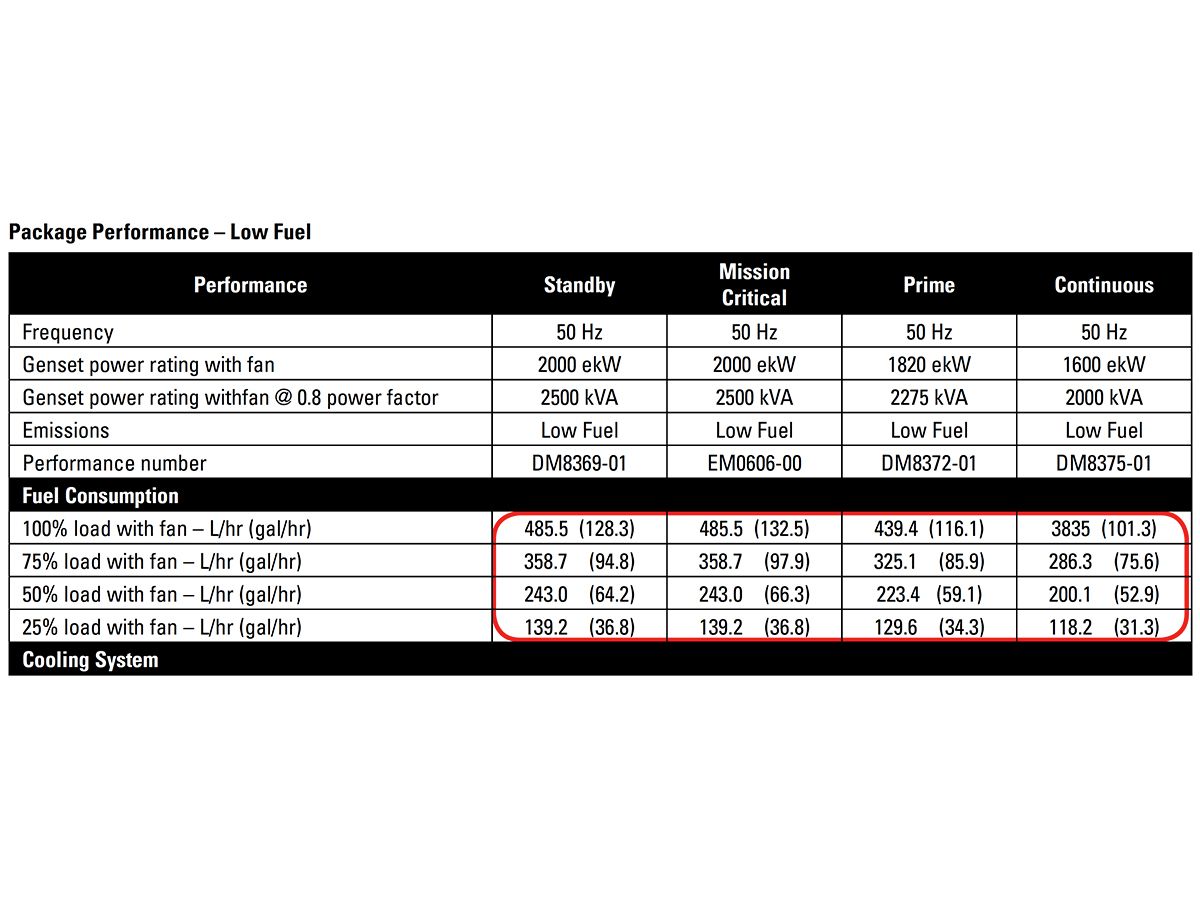

Sign In
Welcome! Sign In to personalize your Cat.com experience
If you already have an existing account with another Cat App, you can use the same account to sign in here
Register Now
One Account. All of Cat.
Your Caterpillar account is the single account you use to log in to select services and applications we offer. Shop for parts and machines online, manage your fleet, go mobile, and more.
Account Information
Site Settings
Security
Comparing Volumetric Fuel Consumptions
Roger Rosborough Caterpillar
June 2019
ABSTRACT
Diesel generator set manufacturers publish volumetric fuel consumption (vfc) data in their specification sheets. A problem arises when trying to compare vfc data from different manufacturers. The fuel density, brake specific fuel consumption tolerance, and the fuel heat value will all influence the volumetric fuel consumption. To make a fair comparison of vfc data between manufacturers would require adjusting one set of data to match the parameters of the other.
VOLUMETRIC FUEL CONSUMPTION DATA
Cat® C9 to C175 diesel generator set vfc is based on nominal engine power and fuel oil of 35° API (16°C or 60°F) gravity having a lower heating value (LHV) of 42780 kJ/kg (18390 Btu/lb) when used at 29°C (85°F) and density 838.9 kg/m3
The nominal brake specific fuel consumption, and hence vfc quoted by Caterpillar, has a tolerance of +/- 3%.
Many manufacturers, however, quote vfc data based on ISO 3046-1 which quotes “Unless otherwise stated, a higher consumption of +5% is permitted for the specific fuel consumption declared at the declared power.” This enables a manufacturer to quote vfc data with a tolerance of 0 to +5%; i.e., the vfc data published is the best it could be with a tolerance of +5%.
Caterpillar vfc data is therefore more conservative and not directly comparable with that of a manufacturer quoting ISO 3046-1. To make a fair comparison, the Caterpillar vfc data can be adjusted to report new data with a +5% tolerance. Figure 1 below shows the fuel tolerance comparison graphically with the reported value represented by a red dot.



To adjust the Caterpillar vfc, the nominal value is first multiplied by 1.03 to find the maximum possible value which is equivalent to an ISO 3046 +5% (maximum), that value must then be divided by 1.05 to find the new ISO 3046 nominal value with a +5% tolerance. This new adjusted Caterpillar nominal value is represented by the dashed red circle in Figure 1.
Many manufacturers typically use a fuel density of 850 kg/m3 which, being denser than the Caterpillar quoted 838.9 kg/m3, also contributes to more favourable vfc data. This can also be factored into the adjustment calculation:
Adjusted Cat vfc (ISO 3046) = Cat vfc*1.03/1.05*(838.9/850) ~~ Cat vfc*0.96814
The equation above shows that vfc data shown on a Caterpillar spec sheet can be multiplied by 0.96814 to give data which is comparable to other manufacturers quoting the ISO 3046 standard. Note from Figure 1 that the adjusted Caterpillar vfc still has potential to be better than the reported value due to the larger tolerance band. As an example, the fuel consumption data from a 3516B generator spec sheet is shown in Figure 2.
Applying the correction factor of 0.96814 to the fuel consumption data in Figure 2 produces the calculated vfc data as shown in Figure 3.
Caterpillar has published some alternative spec sheets reflecting the ISO 3046-1 standard by using the 0.96814 correction factor, as per the example shown in Figure 3.
It must be recognised however, that this correction factor could differ depending on the manufacturer’s chosen fuel specifications which could include a different LHV.
It would be impractical to attempt to account for all variations in fuel specifications and the customer should examine the manufacturer’s specifications to find the fuel density and LHV value used. If this is found to differ from 850 g/l (or kg/m3) and 42780 kJ/kg then a different correction factor is needed.
The correction factor for the Cat vfc data can be calculated as follows:
Correction Factor = 1.03/1.05*(838.9/A)*(42780/B)
where
A = Manufacturer’s published fuel density measured in g/l or kg/m3 and
B = Manufacturer’s published lower heat value (LHV) in kJ/kg
The customer should then calculate the adjusted vfc (ISO 3046) based on the calculated correction factor.
Adjusted vfc (ISO 3046) = Cat vfc* Correction Factor


